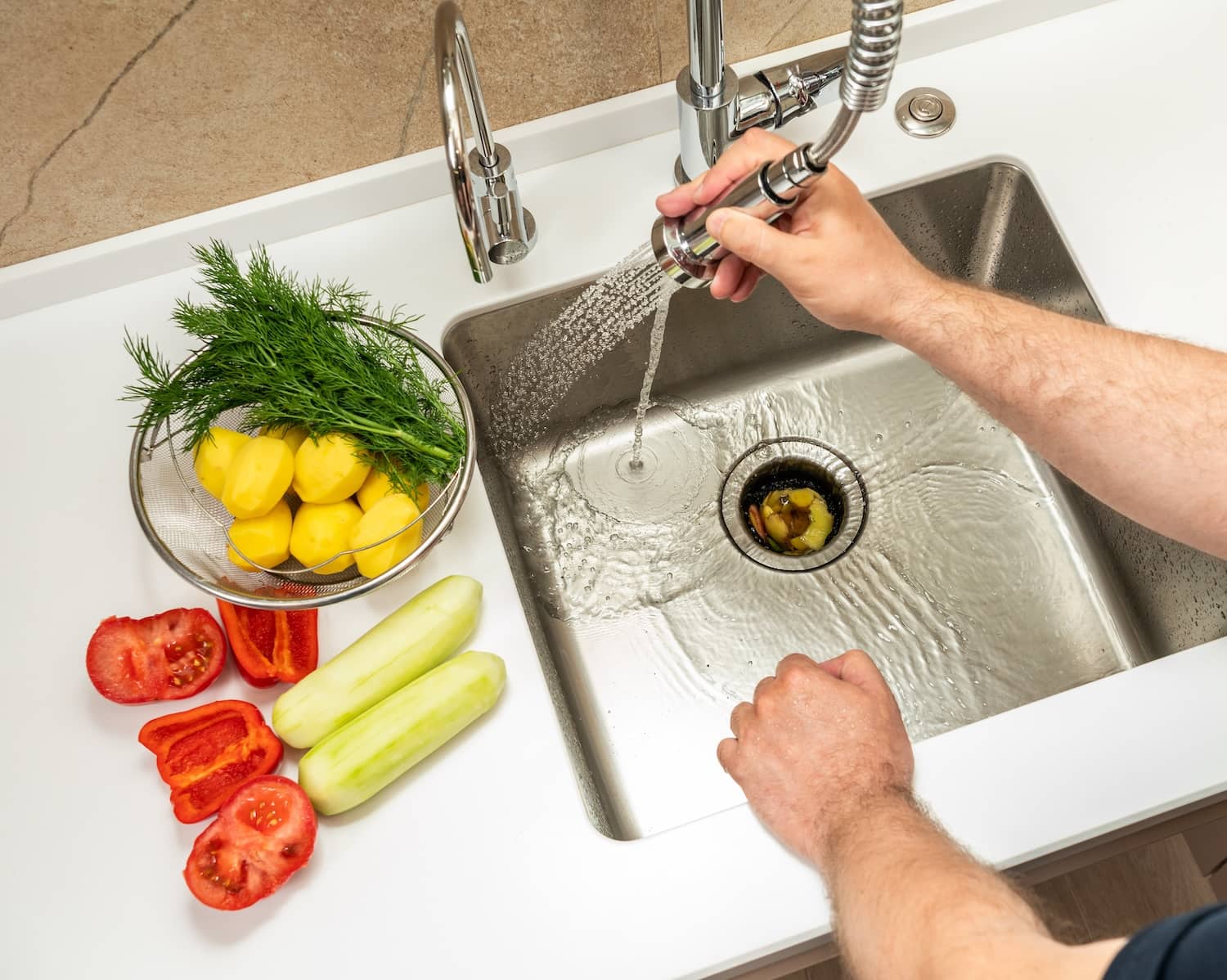We've encountered this article on The Handy Guide To Fixing Your Garbage Disposal Leaking listed below on the internet and thought it made sense to discuss it with you in this article.

Waste disposal unit are vital kitchen appliances that aid in throwing away food waste efficiently. Nevertheless, a dripping garbage disposal can be an irritating and untidy issue to handle. Fortunately, many leaks can be repaired conveniently with a few easy steps. In this short article, we will go over just how to take care of a leaking garbage disposal efficiently.
Introduction
Garbage disposals are set up under kitchen area sinks and are designed to shred food waste right into smaller items, permitting it to travel through the pipes system easily. While these tools are typically trusted, leakages can occur with time as a result of deterioration, loose connections, or damages to the system.
Step-by-Step Guide to Repairing a Dripping Waste Disposal Unit
Turn Off the Power
Before attempting any type of repair work, ensure that the power to the garbage disposal system is switched off to stop the threat of electric shock.
Locate the Leakage
Determine the precise area of the leak and figure out the reason
Tighten up Links
Utilize a wrench to tighten any kind of loose links in between the disposal device and the plumbing system.
Change Seals or Gaskets
If the leakage results from worn seals or gaskets, remove the old elements and change them with brand-new ones.
Patching Cracks or Holes
For fractures or openings in the disposal device, use epoxy or an appropriate patching product to secure the broken area.
Determining the Source of the Leakage
Prior to trying to take care of a dripping garbage disposal, it is necessary to recognize the resource of the leakage. This can commonly be done through visual assessment or by conducting easy tests.
Visual Evaluation
Examine the waste disposal unit system carefully for any indications of water leakage. Pay very close attention to locations around seals, gaskets, and link points.
Testing for Leaks
One means to examine for leaks is by running water through the disposal device and checking for any noticeable signs of leak.
Usual Root Causes Of Leaks in Rubbish Disposals
Worn Seals and Gaskets
Seals and gaskets play a critical duty in stopping water from leaking out of the garbage disposal. With time, these elements can wear away, bring about leaks around the disposal device.
Loose Links
The links in between the waste disposal unit and the plumbing system can come to be loose over time, causing water to leak out throughout procedure.
Splits or Openings in the Disposal Unit
Physical damages to the garbage disposal, such as splits or openings in the housing, can additionally result in leakages.
Tools and Materials Needed for Fixing a Dripping Garbage Disposal
Before starting the repair service process, collect the needed devices and materials, consisting of a screwdriver, flexible wrench, plumbing's putty, replacement seals or gaskets, and epoxy or patching product for repairing splits or openings.
Examining the Waste Disposal Unit After Fixing
Once the repair work is full, evaluate the garbage disposal by running water via it to make certain that the leak has been fixed.
Preventive Upkeep Tips to Prevent Future Leakages
To prevent future leakages, it is vital to carry out routine upkeep on your garbage disposal. This consists of maintaining it clean, staying clear of putting non-food things or tough things down the disposal, and occasionally checking for leakages or other issues.
Conclusion
In conclusion, repairing a leaking garbage disposal is a fairly simple procedure that can be finished with standard devices and products. By following the actions outlined in this short article and exercising preventive upkeep, you can keep your garbage disposal in good working problem and avoid pricey repair services in the future.
What to Do About a Leaking Garbage Disposal
A leaking garbage disposal often goes unnoticed until you confront a sopping cabinet, a foul-smelling puddle, or an audible drip-drip-drip from the unit. The fix can be frustrating, too, because the leak can stem from a number of components in the system. Fortunately, with a little sleuthing, you can zero in on the leak and—depending on the exact location—stop the icky oozing and repair the component that caused it. Worst case scenario, if it turns out that the garbage disposal must be replaced, installing a new one is a reasonable do-it-yourself task for those with basic plumbing skills. Read on to keep the cash you’d otherwise hand over to a pro.
Prepare to find the leak
Prior to testing the garbage disposal for leaks, unplug it at the wall outlet and turn off the power from the breaker box to prevent electrical shock. Then insert a watertight sink stopper into your sink drain and wipe the unit dry with a clean cloth. In any handy container, mix a few drops of food coloring into a few cups of water, and pour the dyed water onto the sink stopper to help you locate the leak.
Investigate the source
the top, where the disposal meets the sink drain the side, where the dishwasher hose or main drain pipe connects to the disposal or the bottom of the unit Inspect each of these locations while gliding a light-colored rag over the unit; the dyed water will readily show on the rag and reveal the location of the leak. If a leak isn’t immediately apparent, remove the sink stopper and pour a few more cups of dyed water down the sink drain, then check for leaks again. Leaks near the top of the unit are more likely to show themselves while the sink is plugged, while side and bottom leaks are more noticeable while the sink is unplugged.
The metal sink flange that sits directly inside the sink drain is typically sealed around the top with plumber’s putty (a clay-like sealant) and then secured from under the sink with bolts. If the plumber’s putty deteriorates, or the bolts loosen, the flange can no longer form a watertight seal between the sink drain and the disposal—which could cause a leak at the top of the unit.
To reseal the leaky flange, you must first detach the garbage disposal. Start by loosening the screws securing the main drain pipe to the disposal, then loosen the screws in the metal clamp securing the dishwasher hose to the disposal and detach the drain pipe and dishwasher hose from the disposal. Loosen the screws in the mounting ring that connects the disposal to the metal mounting assembly beneath the sink, then pull down the disposal and carefully set it on a clean, dry surface. Loosen the bolts in the mounting assembly with a wrench, then pull down the mounting assembly and set it near the disposal.

I am just very fascinated by The Handy Guide To Fixing Your Garbage Disposal Leaking and I'm hoping you enjoyed reading the new blog post. I beg you set aside a second to promote this content if you enjoyed it. Thanks so much for taking the time to read it.
Booking
 Amanda Bearse Then & Now!
Amanda Bearse Then & Now! Andrea Barber Then & Now!
Andrea Barber Then & Now! Danica McKellar Then & Now!
Danica McKellar Then & Now! Soleil Moon Frye Then & Now!
Soleil Moon Frye Then & Now! Daryl Hannah Then & Now!
Daryl Hannah Then & Now!